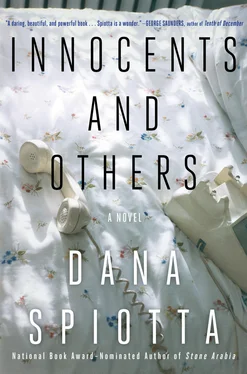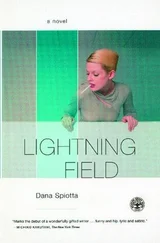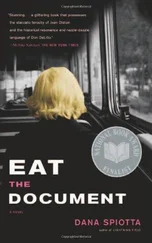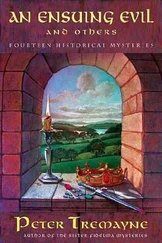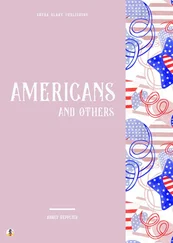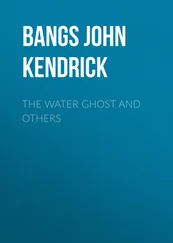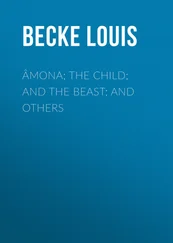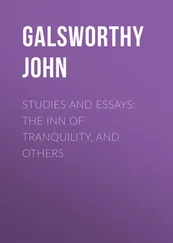Jelly closed her eyes and said his name into the receiver, “Jack.” She lay on her stomach with the phone next to her. “I’m in bed.” And she listened to him breathe.
Meadow had moved back upstate full-time after an aborted attempt at attending NYU in the fall. Carrie wasn’t able to make frequent excursions to Gloversville to visit Meadow. It was Carrie’s sophomore year, and school kept her very busy. She had also met someone, Will, and Meadow gathered that she needed to spend a lot of time cooking and playing house with him. By June, Meadow had a full agenda of projects she wanted to execute. Carrie couldn’t stay the whole summer, but she did come up for most of June and July as promised.
First they made reenactments of silent films lost or destroyed. They focused on the lost Alice Guy-Blaché films because she was a woman and didn’t get enough credit as one of film’s early greats. Meadow didn’t have to talk Carrie into it; she was up for whatever Meadow had in mind. They shot black-and-white silent film, and Meadow felt such relief in not having to think about sound for a while. The silent, colorless world: at least two variables eliminated, some constraints. They used a vintage wind-up Bell & Howell 16 mm Filmo camera, “just like the one Jean Rouch used to make Moi, un noir. ” The camera shot for twenty seconds and then needed to be cranked again. They would make black-and-white silent vignettes, like pieces of a dream.
For inspiration Meadow insisted they watch Barry Lyndon , Kubrick’s film about eighteenth-century Europe. It is a film of poses and artifice, each scene composed as clearly as a painting, each actor stiff and unmoving in giant wig and elaborate costume. Meadow remembered how Carrie and she hated the film when they saw it on video at Meadow’s house the summer of eleventh grade, a long Kubrick summer where they watched his films in a binge and then watched their favorites over and over ( Paths of Glory, 2001: A Space Odyssey, Dr. Strangelove ). Barry Lyndon had seemed a laughable misfire for the first fifteen minutes and then turgid and boring after that.
But recently Meadow read that the disdained Barry Lyndon was playing for a short run with a new 70 mm print. She took the four-and-a-half-hour bus ride and snuck into the city, not telling anyone. She went straight to the beautiful Paris Theatre on West Fifty-eighth Street and made it just in time for the 3:30 show. Again the resistance in the first fifteen minutes, but already she felt herself change in relation to it. The baroque music, the minimal dialogue: it worked like a silent film. And it was almost a film of no movement from the actors or settings, a film about stillness. All the movement was from the camera, which languidly tracked in or out of the heavily sumptuous tableaux. Meadow felt it most in the remarkable scene in which Barry first kisses his future wife, Lady Lyndon. The music: the second movement of Schubert’s Piano Trio in E-flat Major, with pulsing piano that gets complicated and intensified by a violin melody and then switches so the violins are pulsing and rhythmic and the piano plays the melody. The actors: Lady Lyndon walking in her huge silk dress to the edge of the terrace and turning to the moonlight. She stares at the sky, her face covered in powder, beautiful and unmoving. Barry moves slowly in the background until he is at the door to the terrace. Kubrick shows them in a medium-distance shot. Slowly — so slowly, wind-up-toy slowly — Barry walks toward her. They are separate but pulling toward each other, as in the music we hear, as if one is the piano and the other is the strings. And as the watcher of the film waits, the length of time — the duration, the time endured — works on you and changes you. It could take an hour and you would watch. It mesmerizes you. The music resolves as the characters finally kiss — the uncanny slowness lets him make a minuet of a kiss, as stylized as the wigs and the clothes. What an arresting, striking thing. Next Meadow watched the cold pale thighs of Lady Lyndon seated in a bath, catatonic with sadness, her white face like Ophelia in that Rossetti painting. The actress barely moves as the camera pulls farther and farther away. Meadow felt pinned to her chair, every part of her body alive to this film. She stayed for the second showing, almost seven total hours of sad, immobile faces burdened by beauty and decoration and decadence, trapped by their own lack of expression. Meadow felt the tears stream down her face and she didn’t wipe them away. How could she have missed the beauty of this film? She despised her younger, callow self and worried about what else she had missed or misunderstood.
After the second showing, Meadow thought about it but didn’t call Carrie, didn’t want to talk to anyone. She took the midnight bus back upstate, in and out of sleep on the way. Now she wanted to share Barry Lyndon with Carrie, had been waiting to share it, and had rented a print for them to watch. She wanted their silent films to use music the way this film did, to entrance the audience. And their films wouldn’t have the usual typical silent-film look of flickering light and too few frames per second speeding up the action. They would have a Barry Lyndon —like devotion to slow, slow time, a languid moving into a painting-like scene, but in twenty-second pieces. So they set up scenes as almost unmoving compositions: a girl at a table with a young man. A boy feeding a kitten. A girl in bed waking. Everything long and slow, but with odd jump cuts every twenty seconds that returned you to the exact same scene. A jump cut out of technical necessity, the camera’s limits, but somehow that worked and made all the difference. It was odd: kinetic and static at the same time. Carrie played pieces of music as they worked (just as Sergio Leone used to so that his shoot-outs felt like ballets), the actors expressing the music in odd ways in their bodies. Carrie used only music of the lost-films era or earlier: she found a gramophone and a stack of 78s at a local antiques store. So they invented films out of titles and technical restraints and found records. Made one, made another, then another. All of them acting and operating the camera, taking turns. They double-exposed the film and made slow-moving ghosts of themselves. They used a filter to render everything a pale lavender. There was a feeling that something good could be happening, a sense of deep possibility among them. This was happiness.
Later, when editing these pieces together alone late at night and adding Carrie’s music, Meadow could feel how good they were becoming, how she made something good into something truly special, and this also was real happiness.
In the last two weeks of Carrie’s visit, Meadow insisted on working on other reenactments, not of lost silent films but of iconic classic films. They would pick a scene from a famous American Western, and they would redo it as precisely as they could with Meadow or Carrie playing the hero. John Wayne’s part or Alan Ladd’s or Gary Cooper’s. All they needed was some Western gear, then they watched the scenes Meadow had decided on, over and over. It was fun: as Meadow redid the scenes, she figured out how they worked. As she acted, she felt the power of the men in her. The mysterious male of the West. It was so simple, and, well, so easy. She also suspected it was more interesting in idea than execution, like many of her ideas. Meadow knew she had a weakness for perfect geometries of concepts, theories, and images. She could feel how it lacked the happenstance magic of the silent films they made, the way the limits of the form had inspired them to do unexpected things.
By the time Carrie left in August, Meadow had raw footage and months of editing ahead of her.
Читать дальше
